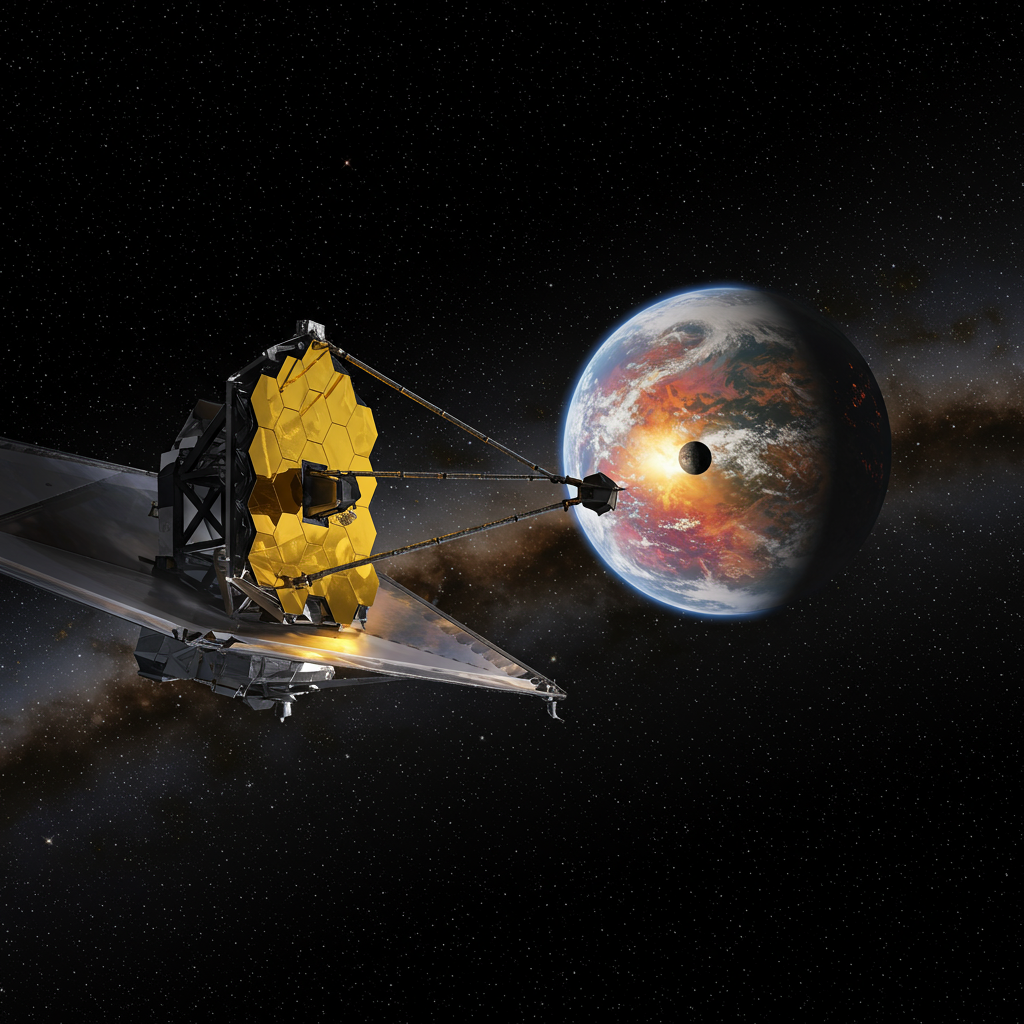The James Webb Space Telescope (JWST) continues to reshape our understanding of the cosmos. In its latest breakthrough, the powerful observatory has successfully discovered and directly imaged an exoplanet, marking a significant first for the telescope. This newfound world, officially designated TWA-7b, holds the record for the smallest alien planet ever captured in a direct image by humanity.
Located around a young, active star system just 111 light-years away, the discovery of TWA-7b highlights JWST’s unprecedented capability to spot distant worlds that were previously invisible to us.
Introducing TWA-7b: A Cold Giant in the Outer Reaches
TWA-7b is classified as a cold gas giant. Initial analysis suggests it has a mass roughly equivalent to Saturn, or about a third of Jupiter’s mass – approximately 100 times the mass of Earth. What makes its direct detection remarkable is its relatively low mass compared to most previously directly imaged exoplanets, which are typically much more massive.
This chilly giant orbits its host star, known as TWA-7 (or CE Antilae), at a staggering distance – 52 times farther than Earth orbits our Sun. To put that in perspective, in our own Solar System, such a distance would place TWA-7b far beyond the orbit of Pluto, out in the Kuiper Belt region.
A Young Star System Ripe for Discovery
The star TWA-7 is a young red dwarf, estimated to be only around 6.4 million years old. This makes it a stellar “toddler” compared to our Sun, which is billions of years old. Crucially, TWA-7 is still surrounded by a prominent protoplanetary disk – a swirling expanse of gas and dust left over from the star’s formation. It is within these very disks that planets are born.
What makes the TWA-7 system particularly valuable for astronomers is its unique orientation: it’s viewed “pole-on” from Earth. This provides a clear, face-on perspective of the entire protoplanetary disk, revealing intricate structures. Observations have shown the disk is divided into three distinct rings with gaps in between. Planet formation theory predicts that young planets forming within such a disk can gravitationally sculpt the surrounding material, carving out these gaps and creating rings, much like shepherd moons shape the rings of Saturn. While disk features suggestive of planets have been seen before, directly finding the planet responsible within one of these features has been challenging.
How JWST Pinpointed the Tiny World
A team led by astronomer Anne-Marie Lagrange utilized JWST’s Mid-Infrared Instrument (MIRI) to investigate the TWA-7 system. They specifically targeted the gaps within the protoplanetary disk, searching for the heat signature of a potential planet.
Using MIRI, they unambiguously detected a source located 1.5 arcseconds from the star, precisely within one of the predicted gaps. Analysis of this source confirmed it is best interpreted as a cold, sub-Jupiter-mass planet – TWA-7b – residing in a cavity it likely carved out in the disk.
A Record-Breaking Achievement for Direct Imaging
This discovery is a significant step forward for direct exoplanet imaging. Direct imaging is notoriously difficult because the faint light from a planet is usually overwhelmed by the blinding glare of its host star. JWST is equipped with advanced instruments, including a coronagraph, that help block starlight and enable the detection of faint infrared emissions from orbiting planets.
Prior to TWA-7b, directly imaged exoplanets were typically much more massive. At approximately 100 times the mass of Earth, TWA-7b is at least 10 times lighter than the vast majority of exoplanets directly imaged before. This finding dramatically extends the lower mass range reachable by direct imaging techniques and demonstrates that JWST, particularly with MIRI, has opened a new window in detecting smaller, colder worlds. The researchers suggest that JWST might even be capable of detecting planets as light as 25 to 30 Earth masses if they are present at wide separations.
Moreover, finding TWA-7b within a feature of its natal disk provides crucial observational evidence that supports key predictions about how planets form and interact with their birth environment.
An Ideal Target for Future Exploration
Unlike most exoplanets discovered through indirect methods (like the transit method, where planets are detected by the dip in starlight as they pass in front of their star), TWA-7b’s large separation from its star makes it an excellent candidate for detailed direct study.
The team highlights that TWA-7b is particularly well-suited for future spectroscopic investigations. This means astronomers can analyze the light coming directly from the planet to learn about its atmospheric composition and potentially gain insights into its interior structure. Studying a non-irradiated, cold giant like TWA-7b offers a unique opportunity to compare its properties with the much older, cooler gas giants in our own Solar System, contributing to our understanding of planetary diversity and evolution.
This groundbreaking research has been published in the prestigious scientific journal, Nature. The discovery of TWA-7b by JWST sets a new standard for direct exoplanet imaging and promises many more revelations about distant worlds in the years to come.




